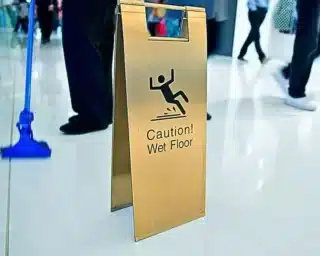
Pedestrian bollards were installed in various Las Vegas locations to prevent fatalities but some may be raising the risk. Many motorists argue that the height and design of bollards throughout the city create a distraction. They also argue that their height blocks their view of pedestrians which increases the risk of an accident. It is a hot topic of debate in Clark County and many wonder whether reducing the height of bollards may make them safer for pedestrians and motorists.
Modern Bollard Design
There are many types of pedestrian bollards. These include permanent, fixed bollards which are typically made of concrete, wood, or metal. These are surface mounted or built into the ground and designed to provide a permanent, immovable barrier.
There are also rising, or retractable bollards. These are typically installed in the middle of the street and designed to restrict general access to a building while allowing access to emergency or delivery vehicles. In many instances, these are positioned right beside pedestrian crosswalks.
There are also many types of removable bollards. These are positioned into underground installations and locked in place during special events such as concerts or festivals. When the event is over, these bollards are removed.
Ultimately, all bollards are designed to control the flow of traffic and prevent vehicular access to buildings, sidewalks, bus stops, and other areas. They are a ubiquitous part of the urban landscape and are located throughout airports, hotels, shopping centers, and public parks in Las Vegas.
Response to Tragedy
The bollards installed around the Las Vegas strip were installed in response to the December 2015 crash in front of the Planet Hollywood Resort. In that incident, 35 people suffered serious injuries when a driver plowed into a bus stop. Many victims suffered traumatic brain injuries and other damage. Some are still receiving treatment. Following the accident, the city began installing bollards around dozens of bus stops in the city, many of which were located in heavily-trafficked areas.
Shortening the Bollards
There are currently more than 4,500 bollards installed on the Las Vegas Strip. This area has the highest rates of pedestrian traffic in the city. Approximately 283 of these bollards are approximately 54″ tall. As motorists travel down the strip, this creates a visual barrier that is distracting. For this reason, the city is shortening these bollards so they are no taller than 36″ tall. Cutting them down may improve pedestrian visibility to passing motorists.
It is an expensive adjustment. Each bollard costs approximately $5,000 to install. The city has not released how much it will cost for shortening these bollards, nor have they released data that shows shortening them will have a positive effect on public safety.
The Effectiveness of Bollards
Bollards create a strong barrier that can prevent most pedestrian crashes. Many are capable of stopping vehicles traveling at 55 mph or faster. They are often used along sidewalks, bus stops, and pedestrian crosswalks to direct the flow of foot traffic and create a safe lane of travel for pedestrians and bicyclists.
However, if the bollards are too tall they can obstruct the view of the sidewalk. This can leave motorists insufficient time to react if a pedestrian comes out from behind the bollards and enters the roadway. Similarly, it can block the view of the road from children, people in wheelchairs, etc. who can’t see over the bollards. Bollards also create a visual distraction. As drivers pass by, the bollards can hypnotize motorists. This can lengthen reaction times and lead to distracted driving accidents.
The Importance of Proper Installation and Construction
Bollards can help reduce the risk of pedestrian-vehicle collisions. However, they must be properly constructed and installed. They must be designed so that they don’t block the view of the road, and so that they are adequately spaced not to create a visual distraction for motorists. These calculations must take into account the speed limit on the roadway, existing lighting, and typical foot traffic in the area. Failure to choose the appropriate bollard and adhere to the corresponding installation standards can render the bollard ineffective.
Liability in Pedestrian Collision
Liability for pedestrian injuries involving bollards depends on a number of factors. If the bollard obstructed the view of the motorist or otherwise was constructed in a manner that distracted the driver, then the city may bear liability for the accident. Conversely, if the driver was speeding or engaged in other reckless behaviors, their actions contributed to causing the accident. In some cases, the city and the motorist may both bear a portion of the responsibility.



